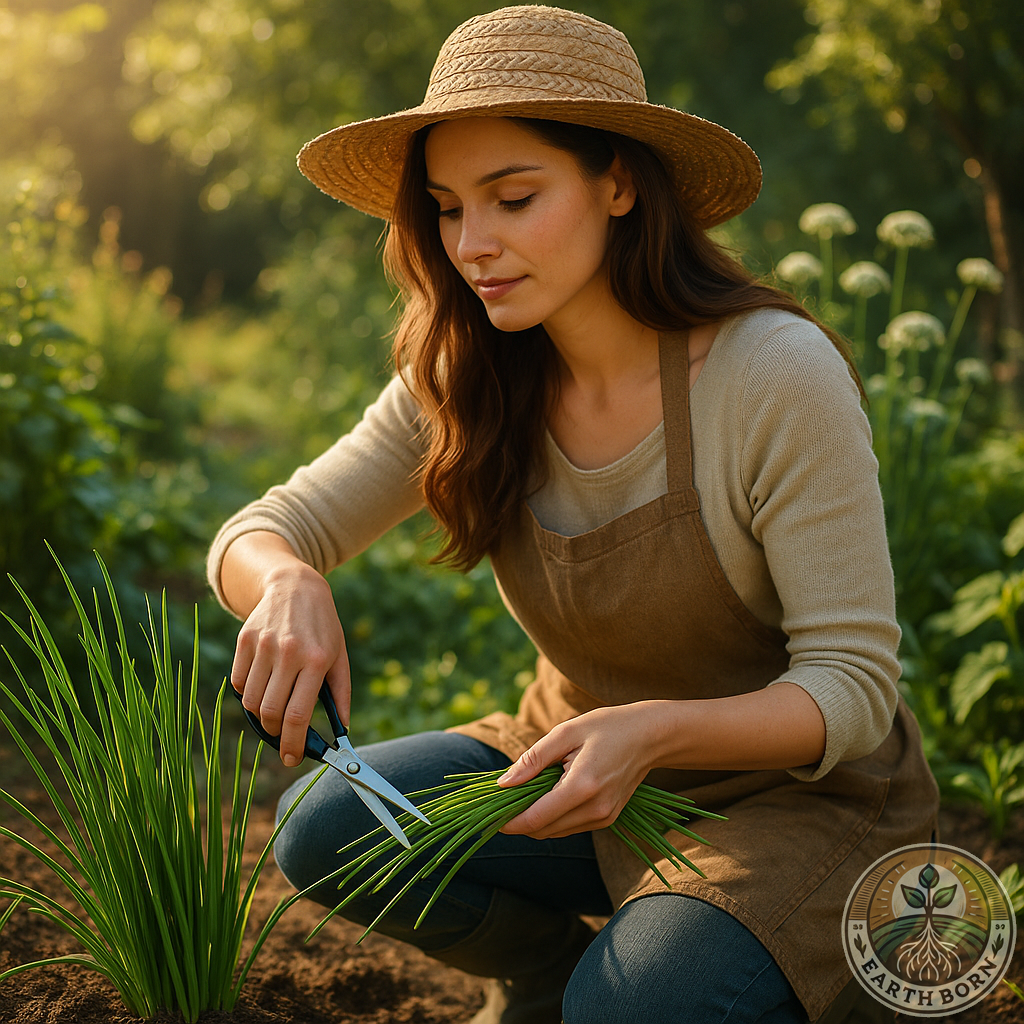
🌱 Introduction and history
Garlic Chives, scientifically known as Allium tuberosum, are hardy perennials that have been cultivated for centuries across Asia, especially in China where they’re a staple in cuisine and traditional medicine. Also called Chinese Chives or Oriental Garlic, these flavorful herbs carry a delicate garlic aroma without the intensity of garlic bulbs. Today, they are celebrated worldwide for their culinary versatility, resilience in the garden, and wellness benefits.
💊 Medicinal Benefits
Garlic Chives are rich in beneficial compounds like Allicin, Vitamin C, and Selenium. These contribute to:
- Supporting healthy digestion
- Boosting the immune system
- Reducing inflammation
- Acting as mild antibacterial and antifungal agents
They’ve been traditionally used in Chinese medicine to support kidney function and overall vitality. Note: Some individuals may experience mild stomach upset if consumed in large quantities.
📅 When to Plant in South Africa
The best time to sow Garlic Chives is in spring (September to November), when temperatures are warming and conditions favor germination. In frost-free regions, they can be sown almost year-round.
🏡 Where to Plant
As a perennial, Garlic Chives will return year after year. Choose a sunny garden bed or large container where they can spread and form healthy clumps over time.
🌞 Soil, Water & Sunlight Requirements
✅ Soil – Fertile, well-draining soil enriched with compost.
✅ Sunlight – Full sun to partial shade.
✅ Water – Keep soil consistently moist but not waterlogged.
✅ Fertilize – Apply organic fertilizer or compost monthly during the growing season.
✅ Spacing – Sow or transplant seedlings 15–20 cm apart.
✅ Seeds germinate – Within 7–14 days.
✅ Transplanting – Ready at 4–6 weeks or when seedlings are 10–15 cm tall.
✅ Maturity height – Plants grow 30–45 cm tall.
🍓 Flowers & Fruit
Garlic Chives produce clusters of delicate white star-shaped flowers in late summer. These flowers attract bees and other pollinators while also being edible and mildly flavored.
🌼 Companion Plants
Garlic Chives are natural pest repellents. They pair well with Tomatoes, Carrots, Lettuce, and Roses, helping deter aphids and other pests.
🐛 Common Pests
Though generally pest-resistant, they may occasionally be affected by:
- Aphids
- Thrips
- Onion flies
🧺 Harvesting
Harvest leaves once plants are 20–25 cm tall by cutting them at the base with scissors. Regular harvesting encourages fresh growth. Flowers can also be harvested for garnishing or drying.
🫙 Storage
Fresh leaves can be kept in the fridge for up to a week, wrapped in a damp cloth. For longer storage, leaves can be chopped and frozen, or dried for use as seasoning.
🧪 How to Use as Medicine
- Digestive tonic: Add fresh chives to salads and soups.
- Immune support: Regularly include in meals to boost Vitamin C intake.
- Mild antimicrobial wash: Steep leaves in hot water, cool, and use as a gentle wash for minor skin irritations.
🎉 Fun Fact
Garlic Chives are one of the few herbs that bloom late in summer, making them a great way to extend your garden’s flowering season.
⚠️ Caution
Overconsumption may cause stomach upset. Pregnant or breastfeeding women should consult a healthcare provider before using Garlic Chives medicinally.
📣 Call to action
Garlic Chives (Allium tuberosum) are a resilient, multipurpose herb that deserves a place in every garden. Easy to grow, health-boosting, and full of flavor—why not dedicate a sunny corner of your garden to this wonderful perennial today? 🌱


 **Meet Sprout!** Sprout is your friendly gardening companion at Earthborn, always ready with helpful advice on plant care, medicinal herbs, and natural gardening solutions. From seedling to harvest, Sprout provides expert guidance to nurture your garden and your well-being—making gardening easy, fun, and naturally rewarding.
**Meet Sprout!** Sprout is your friendly gardening companion at Earthborn, always ready with helpful advice on plant care, medicinal herbs, and natural gardening solutions. From seedling to harvest, Sprout provides expert guidance to nurture your garden and your well-being—making gardening easy, fun, and naturally rewarding.
